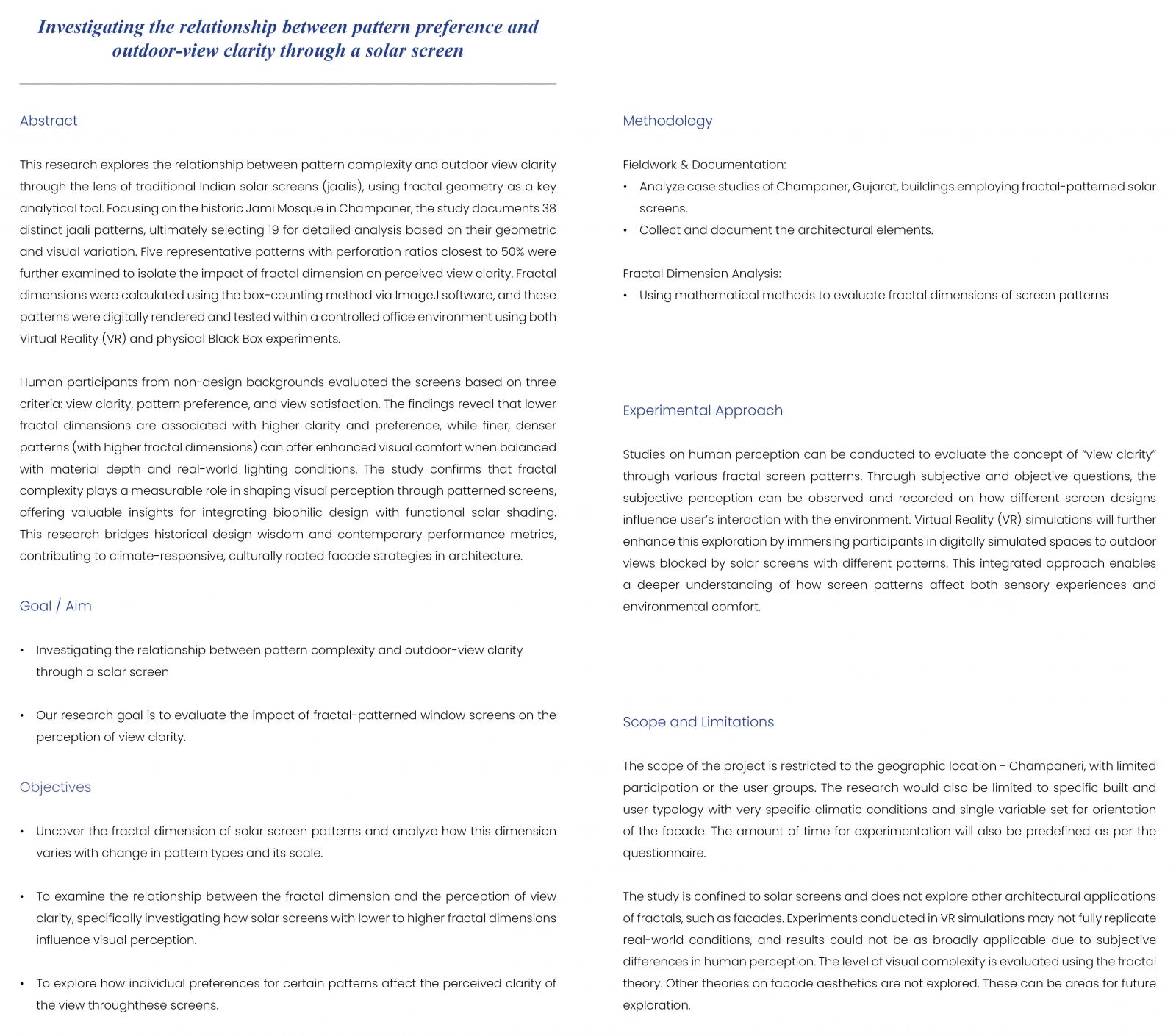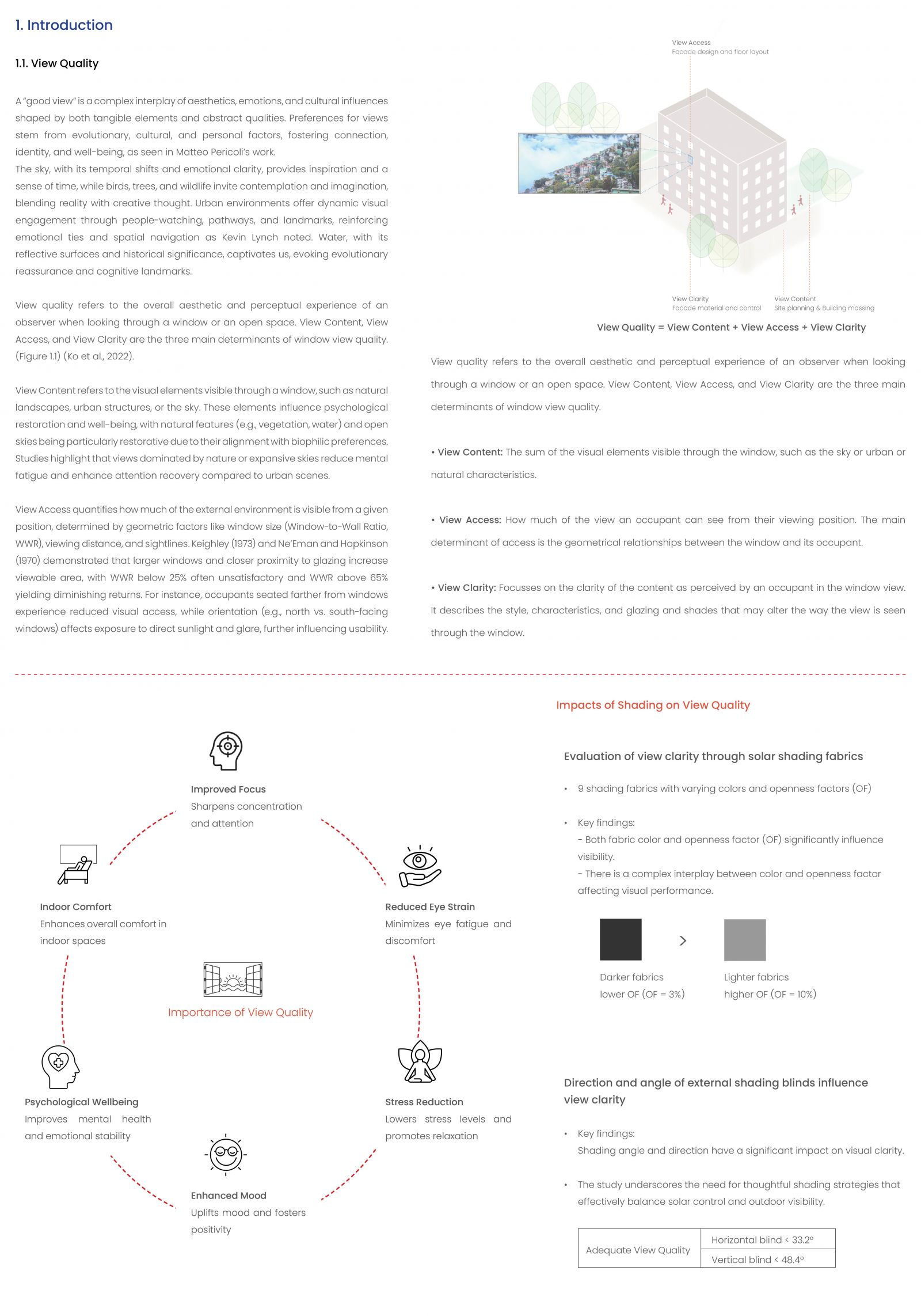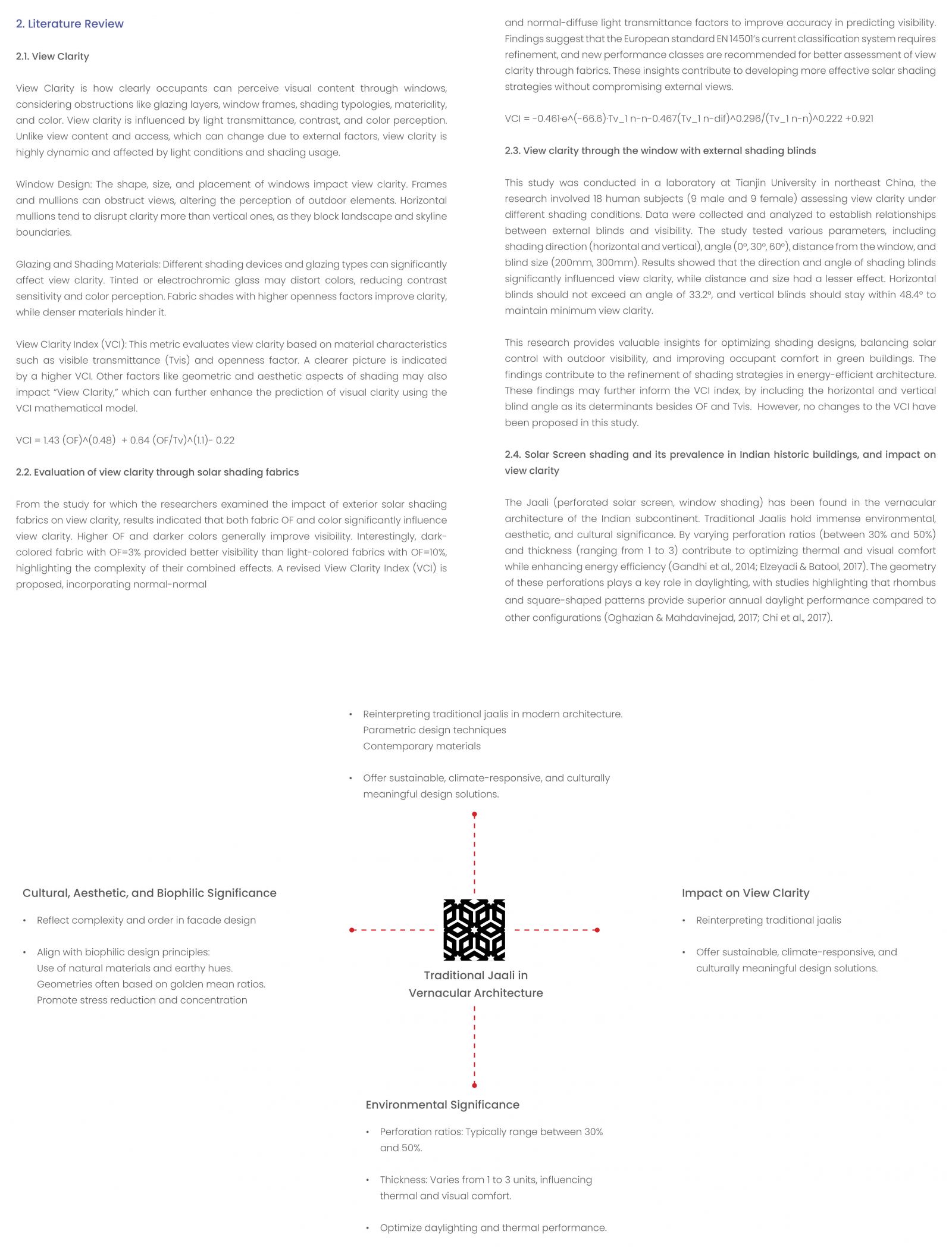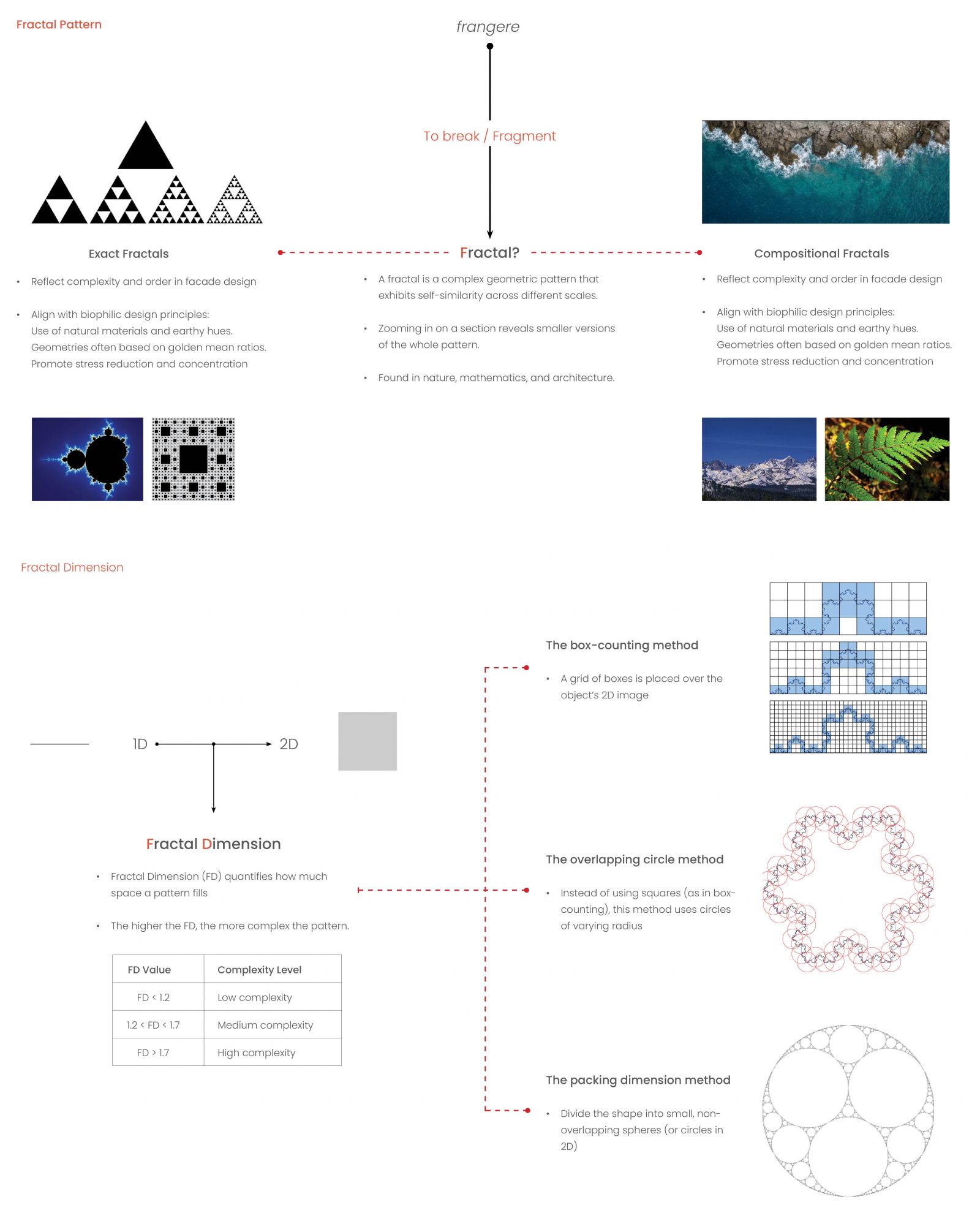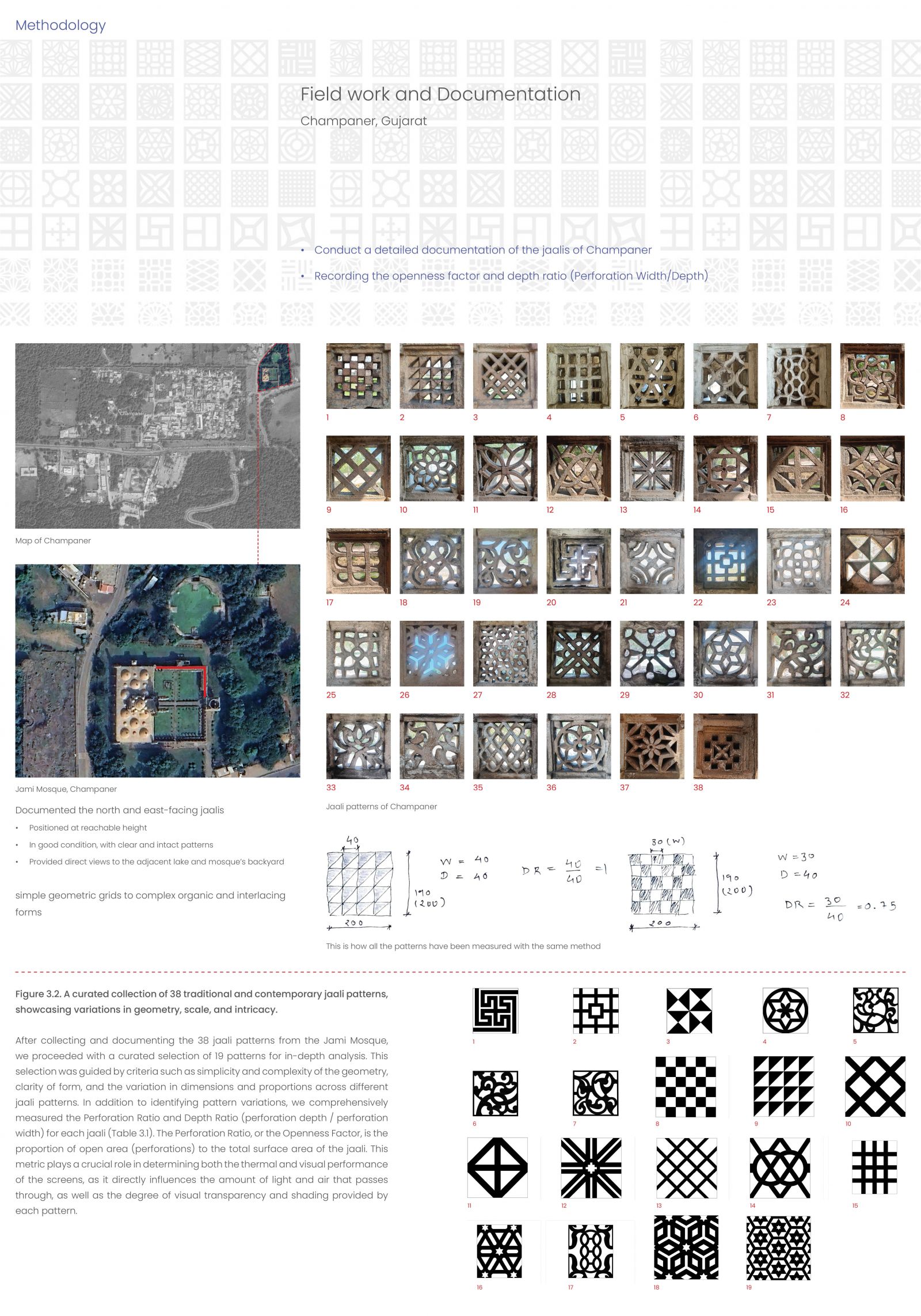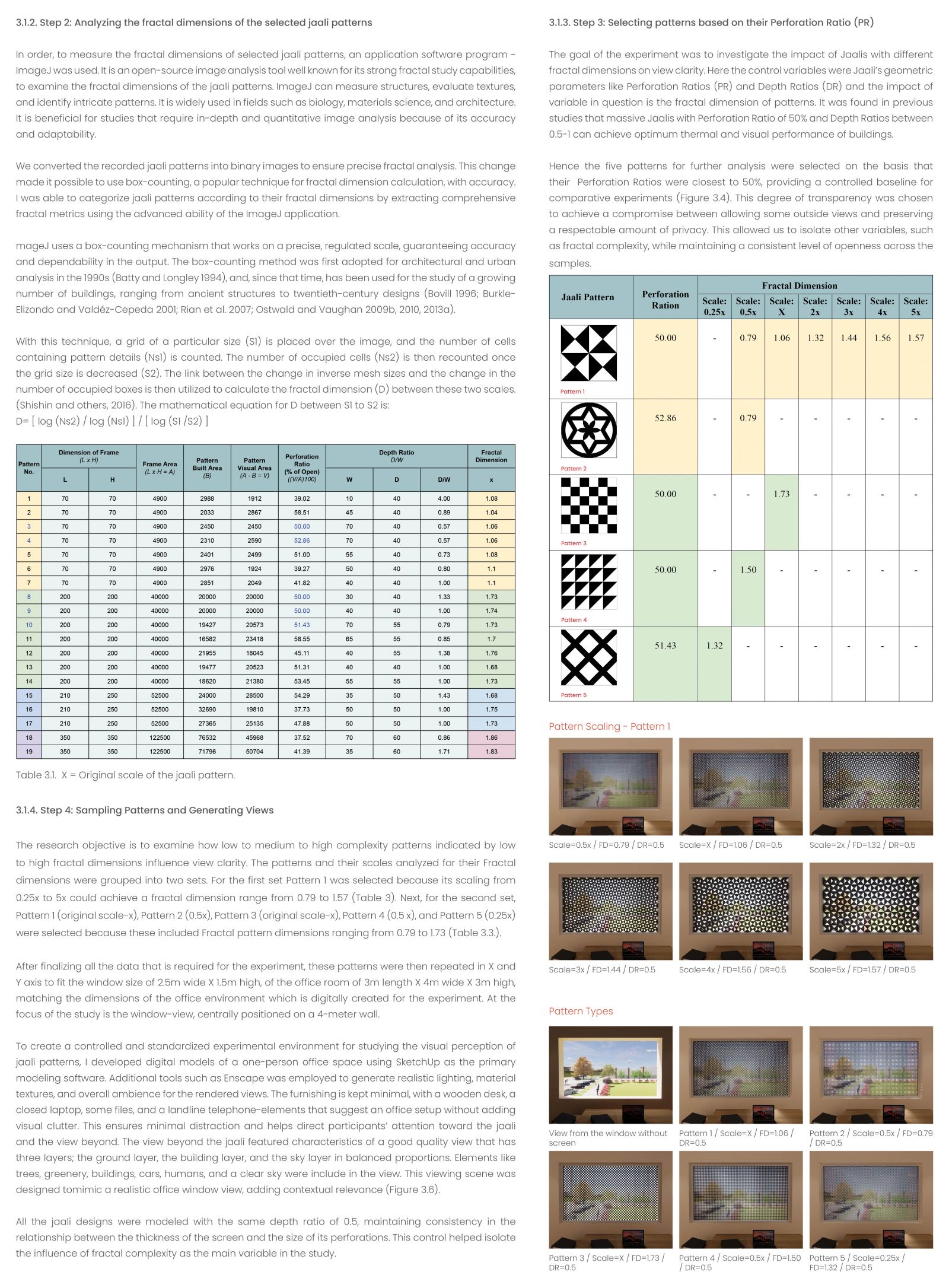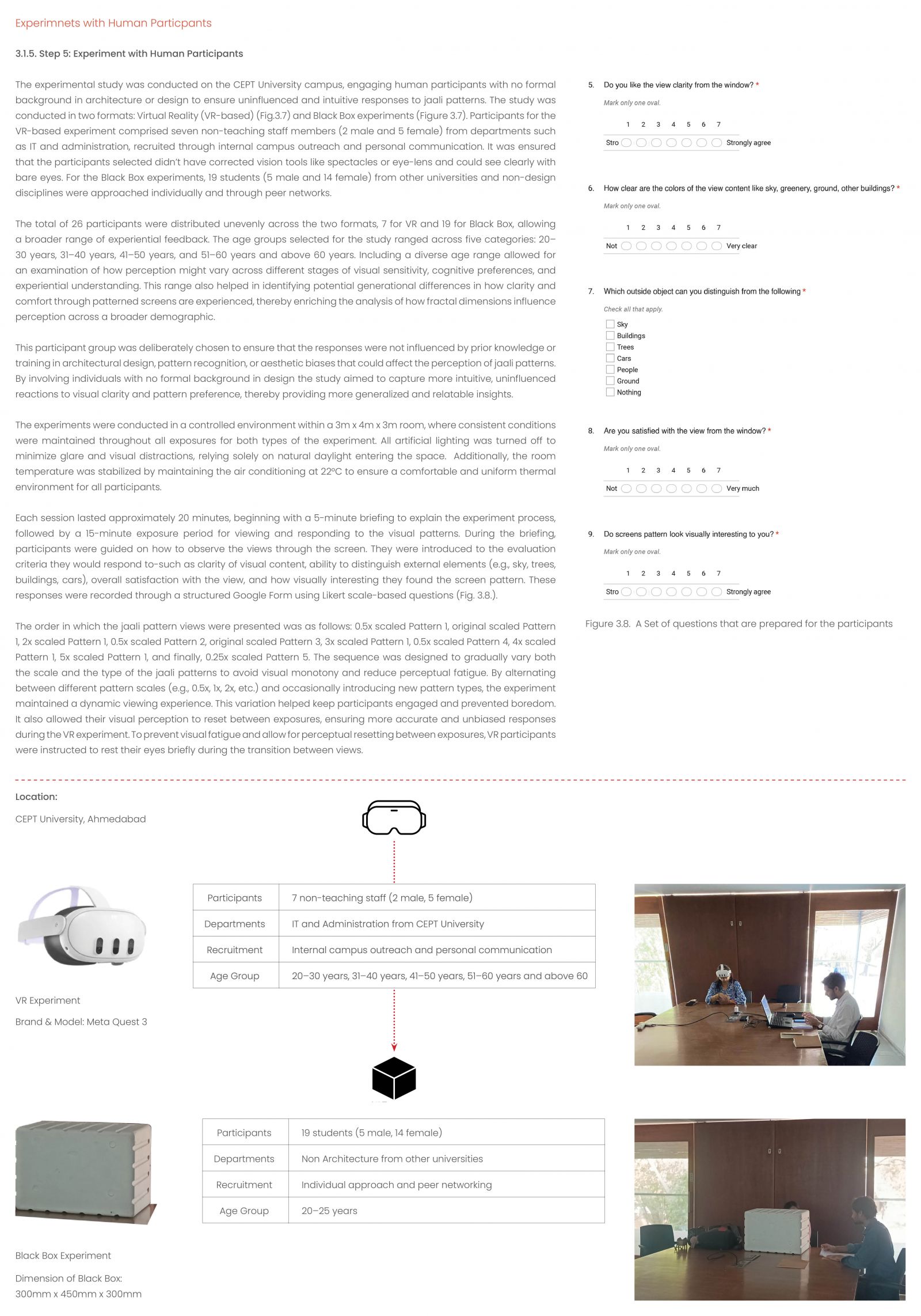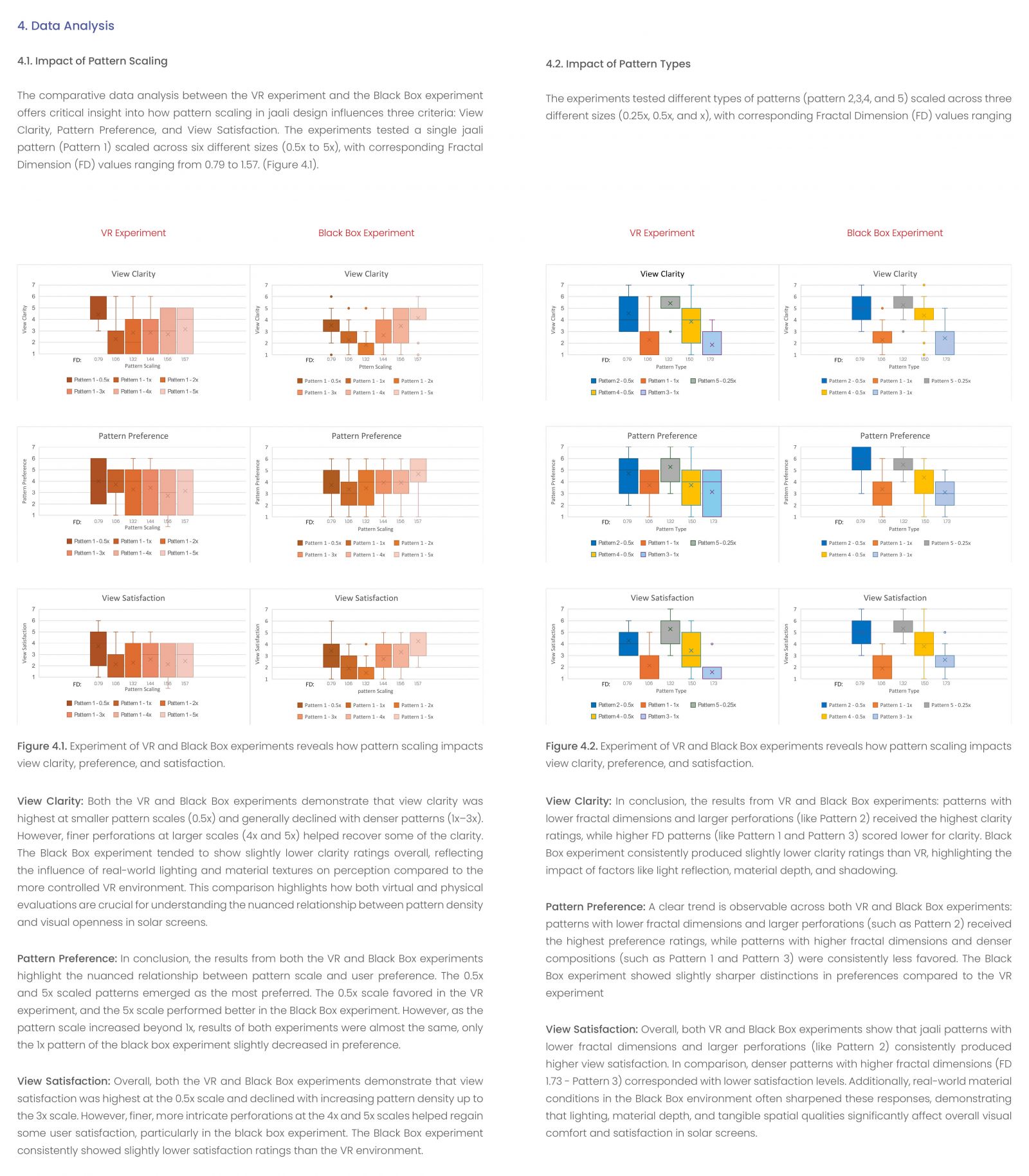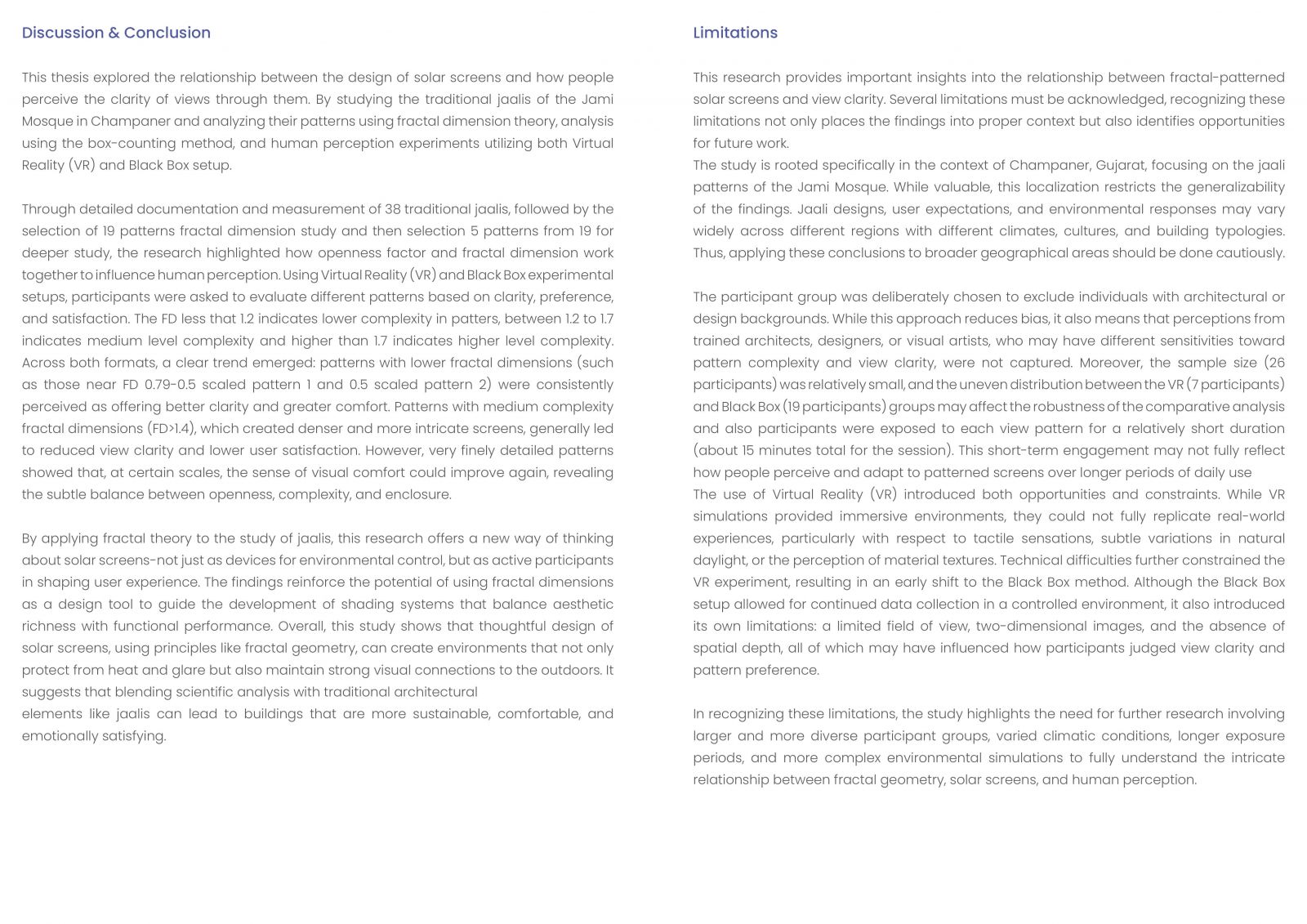Your browser is out-of-date!
For a richer surfing experience on our website, please update your browser. Update my browser now!
For a richer surfing experience on our website, please update your browser. Update my browser now!
This research explores the relationship between fractal complexity in jaali patterns and perceived outdoor-view clarity, pattern preference, and visual satisfaction. Using the historic Jami Mosque in Champaner as a case study, 38 traditional stone screens were documented and analyzed. From these, five patterns with approximately 50% perforation ratios were selected and assessed for their fractal dimension using the box-counting method in ImageJ. Virtual Reality and Black Box experiments were conducted with non-design participants to evaluate perception. The findings reveal that jaalis with lower fractal dimensions offer higher clarity and preference, while those with higher complexity may enhance visual comfort under certain conditions. The study demonstrates how integrating traditional design with quantitative analysis can inform responsive, biophilic facade strategies in contemporary architecture.
View Additional Work